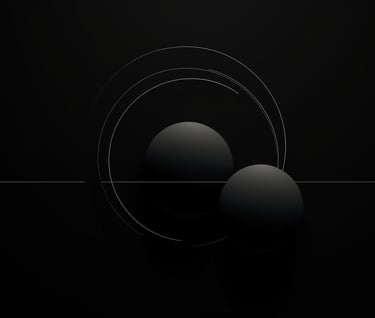The Elegance of Simplicity
Embracing Minimal Design for Maximum Impact
8/17/20233 دقيقة قراءة


In a world bustling with information, distractions, and excess, the art of minimalism has emerged as a breath of fresh air—a serene oasis amid the chaos. From architecture and fashion to technology and art, the "less is more" mantra of minimal design has not only captivated our aesthetic senses but also transformed the way we perceive and interact with the world around us. In this blog post, we embark on a journey to explore the enchanting realm of minimal design and uncover how its simplicity wields the power to create profound impact.
A Blank Canvas of Possibilities
Imagine a canvas, untouched and unadorned, inviting you to create something beautiful from the very core of your creativity. Minimal design embraces this blank canvas philosophy, allowing space for ideas to breathe and emotions to resonate. By stripping away the unnecessary, we unveil a pristine space where the essential elements can shine and communicate their message with clarity.
Functionality and Form in Harmony
Minimal design celebrates the symbiotic relationship between functionality and form. In a world saturated with complexities, minimalism stands as a testament to the idea that a well-designed object need not be overly adorned or complicated. Each element within a minimal design is purposeful, ensuring that every line, color, and space serves a distinct function while harmonizing with the overall aesthetic.
The Art of Less
Leonardo da Vinci once said, "Simplicity is the ultimate sophistication." Minimal design embodies this notion, proving that elegance lies in the subtlety of details rather than flamboyant extravagance. By paring down elements to their essence, minimalism draws attention to the finer intricacies that might otherwise be overlooked, fostering a deeper appreciation for the beauty that exists in the mundane.
Clarity in Communication
In a world where communication is often cluttered and convoluted, minimal design emerges as a beacon of clarity. Whether in graphic design or user interfaces, the art of less ensures that information is communicated swiftly and effectively. By eliminating unnecessary distractions, minimalism empowers the viewer to focus on the core message, fostering a more profound and memorable connection.
Embracing White Space
White space—the seemingly vacant gaps that encompass a design—is a central tenet of minimalism. Far from being wasted space, these areas invite contemplation, allowing the viewer's gaze to rest and the mind to wander. In a world perpetually bombarding us with stimuli, white space offers a visual respite, a sanctuary for the mind to find solace and inspiration.
The Zen of Minimalism
Minimal design is more than just an aesthetic choice; it's a way of life. Embracing the principles of minimalism can lead to a sense of tranquility and mindfulness. By decluttering our physical spaces and mental landscapes, we free ourselves from the burdens of excess, allowing room for what truly matters to flourish.
Less is More: A Creative Revolution
As we navigate a rapidly changing world, the allure of minimal design beckons us to embark on a creative revolution—one where we prioritize intentionality over excess, where we celebrate the power of restraint, and where we craft experiences that resonate deeply. Whether it's the sleek lines of a minimalist sculpture, the elegance of a simple website interface, or the tranquil ambiance of a sparsely decorated room, minimal design teaches us that true beauty often lies in the spaces in between.
In conclusion, the minimalist movement invites us to explore the profound impact that can be achieved by embracing simplicity. In a world inundated with noise, minimal design serves as a guiding light—a reminder that beneath the layers of excess, there is a timeless beauty waiting to be uncovered. So, let us embark on this journey of creative discovery, where we celebrate the elegance of simplicity and embrace the notion that, indeed, less is more.
